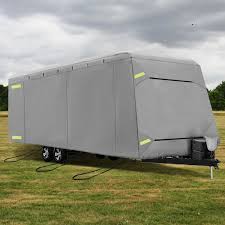If you own a car or RV, you know how expensive they can be. Investing in car and RV covers is a great way to protect your investment and keep your vehicles looking new for years to come. Car covers and RV covers provide essential protection against the sun, rain, snow, dirt, and debris, as well as helping to reduce the fading and cracking that can occur over time. Whether you need a full-size car cover or a small RV cover, investing in protective covers can be a great way to protect your car and RV from the elements.
The High Cost of Vehicle Repairs: Why It’s Important to Protect Your Car and RV
Car repairs can be incredibly costly, especially when it comes to the exterior of your vehicle. From scratches and dings to paint damage and rust, the expenses can quickly add up. That’s where car covers come in. Investing in a car cover is a smart move to protect your car from potential repairs down the line. A car cover acts as a barrier, shielding your vehicle from harsh weather conditions, UV rays, and other external factors that can cause damage. By using a car cover, you can avoid expensive repairs and keep your car looking pristine for longer. Don’t let avoidable repairs drain your bank account; protect your investment with a car cover today.
The Benefits of Using Car and RV Covers
Car and RV covers offer a wide range of benefits that go beyond simply protecting your vehicle from the elements. Firstly, using a car cover can prevent scratches and dings that can easily happen in parking lots or crowded streets. It also helps to keep your car clean by preventing dust, dirt, and debris from settling on the surface. Car covers can also protect your vehicle’s paint from fading and cracking due to UV rays. Additionally, using an RV cover can prevent damage from snow, rain, and other environmental factors. By investing in a car and RV cover, you can prolong the lifespan of your vehicles and maintain their value for years to come.
Understanding the Different Types of Car and RV Covers
When it comes to choosing a car or RV cover, it’s important to understand the different types available. One option is a universal car cover, which is designed to fit most vehicles and offers basic protection against the elements. Another option is a custom-fit car cover, which is specifically tailored to your vehicle’s make, model, and year. These provide a snug fit and offer superior protection. For RVs, there are also different types of covers, such as Class A, Class B, and Class C covers, each designed to fit the specific size and shape of your RV. By understanding the different types of car and rv covers available at https://carcover.com , you can choose the one that best suits your needs and provides optimal protection for your investment.
Tips for Choosing the Right Car and RV Cover for Your Needs
Choosing the right car or RV cover is essential to ensure maximum protection and longevity for your vehicle. Here are some tips to help you make the best decision. Firstly, consider the climate and weather conditions in your area. If you live in a place with harsh winters, a cover with additional insulation and water-resistant properties would be ideal. Secondly, measure your vehicle accurately to find the perfect fit. Look for covers with elastic hems or adjustable straps for a snug fit. Additionally, consider the material of the cover. Waterproof and UV-resistant materials like polyester or nylon are highly recommended. Lastly, read customer reviews and ratings to get an idea of the cover’s durability and effectiveness. With these tips in mind, you can confidently choose the right car cover that meets your specific needs and protects your investment effectively.
Maintaining Your Car and RV Cover: Best Practices
Proper maintenance of your car and RV cover is essential to ensure its longevity and effectiveness in protecting your vehicles. Here are some best practices to follow:
- Clean the cover regularly: Remove any dirt, dust, or debris from the cover by brushing or gently wiping it down. This will prevent any abrasive particles from scratching the surface of your vehicle.
- Use mild soap and water: If your cover becomes dirty or stained, use a mild soap and water solution to gently clean it. Avoid using harsh chemicals or bleach, as they can damage the material of the cover.
- Allow the cover to dry completely: After cleaning, make sure to air dry the cover completely before storing or reapplying it. Moisture trapped in the cover can lead to mold or mildew growth.
- Store the cover properly: When not in use, fold or roll the cover neatly and store it in a dry, cool place. Avoid storing it in direct sunlight or extreme temperatures, as this can cause the material to deteriorate.
- Check for damage or wear: Regularly inspect your car and RV cover for any signs of damage or wear. Look for tears, rips, or loose seams that may compromise its protective capabilities. If you notice any issues, consider repairing or replacing the cover.
By following these best practices, you can ensure that your car and RV cover remains in optimal condition, providing reliable protection for your vehicles year after year.

